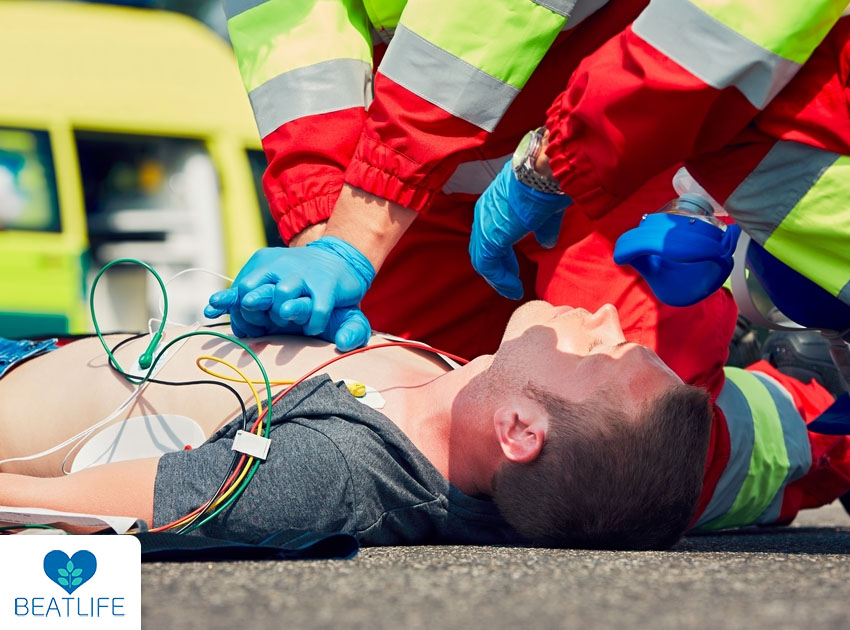When a life is on the line, every second matters. Imagine a sudden cardiac arrest, a state of chaos in which breathing stops and heartbeat fails. In these crucial situations, CPR, or cardiopulmonary resuscitation, frequently makes the difference between life and death. The mere mention of CPR evokes visions of emergency situations in which people heroically perform chest compressions in order to preserve life. However, the question remains: how long can CPR keep someone alive? We delve into the science, challenges, and the critical significance of CPR in the race against time in this examination of the critical minutes that follow a cardiac arrest.
Contents
What is CPR?
CPR, or cardiopulmonary resuscitation, is a life-saving procedure used to maintain breathing and circulation in the critical minutes that follow cardiac arrest. The abrupt cessation of cardiac activity, resulting from a heart attack, drowning, or other emergencies, can cause cerebral hemorrhage or even death in a matter of minutes. By manually helping the heart pump blood and sustain oxygenation until advanced medical assistance arrives, CPR attempts to close this dangerous gap.
Rescue breathing and chest compressions are the two main techniques used in CPR. Rescue breaths supply the vital oxygen required for cellular function, while chest compressions function to maintain blood flow through the heart and to vital organs. In order to buy time and improve the chances of a successful resuscitation, this cooperative effort is essential. Even though CPR is a technique that can be performed by professionals with training, ordinary people can also benefit from its simplicity as it turns common people into potential heroes who can save someone’s life in an emergency.

How long can CPR keep someone alive; The Golden Minutescpr keep someone alive
Within the unpredictability of cardiac emergencies, the “Golden Minutes” represent a crucial moment when prompt CPR delivery can mean the difference between life and death. The 5 to 10 minutes following a cardiac arrest are a brief but crucial time frame in which CPR keep someone alive. There is an immediate sense of urgency; passersby who quickly start CPR become real heroes, stepping in during those critical seconds when the heart stops beating. This golden window is more than just an idea; it’s a race against time in which people with CPR knowledge can keep the fragile balance between life and the threatening shadows that grow closer by the minute.
But over time, the golden glow disappears. The physiological toll that passing time takes on the body increases, making successful resuscitation of an unconscious patient more difficult. The Golden Minutes highlight the urgency of performing CPR as well as the precariousness of life in cases of cardiac arrest. It serves as a reminder that people who act quickly and decisively, realizing that time is of the essence in the delicate choreography of CPR, have the power to keep someone alive.

Factors Influencing CPR Success
There are numerous factors that affect how successful CPR is in saving a life, and each one is crucial to maintaining the weak balance between life and the grave risk of cardiac arrest.
The quality of chest compressions stands out as the most important factor. Effective, continuous chest compressions increase the chances of survival by guaranteeing that oxygenated blood reaches critical organs. It is crucial that CPR providers receive the necessary training and maintain the appropriate compression depth and rate, highlighting the necessity of both accuracy and endurance.
Another important factor is the prompt start of CPR. The chances of a successful outcome increase with the speed at which CPR is started, particularly during the Golden Minutes. The critical need of bystander intervention highlights the significance of CPR instruction and public awareness.
The introduction of CPR feedback device, like the CPRmeter produced by the BEATLIFE company, has completely changed the landscape of technological advancements. To guarantee that every compression is ideal, these devices offer real-time guidance on compression depth and rate. The effective application of technology not only aids in training but also improves the quality of CPR in actual emergencies, thereby adding to the overall success of the intervention aimed at saving lives. Maximizing the potential to save a life during a cardiac crisis requires a combination of prompt action, technology support, and education, as we explore the subtle factors influencing the success of CPR.
Conclusion
Time is of the essence when it comes to how long CPR keep someone alive, with the first Golden Minutes having the greatest impact. The likelihood of preserving life is greatly increased when CPR is started quickly within the first five to ten minutes. Although performing CPR right away can be a lifesaver until trained medical help arrives, its efficacy wanes with time and the likelihood of success decreases as minutes pass. The precise duration varies according to the cause of cardiac arrest and the patient’s general health. Advanced medical interventions and technologies may be able to prolong life beyond the first stage, but in the critical race against time to save a life, timely and effective CPR is still crucial.

